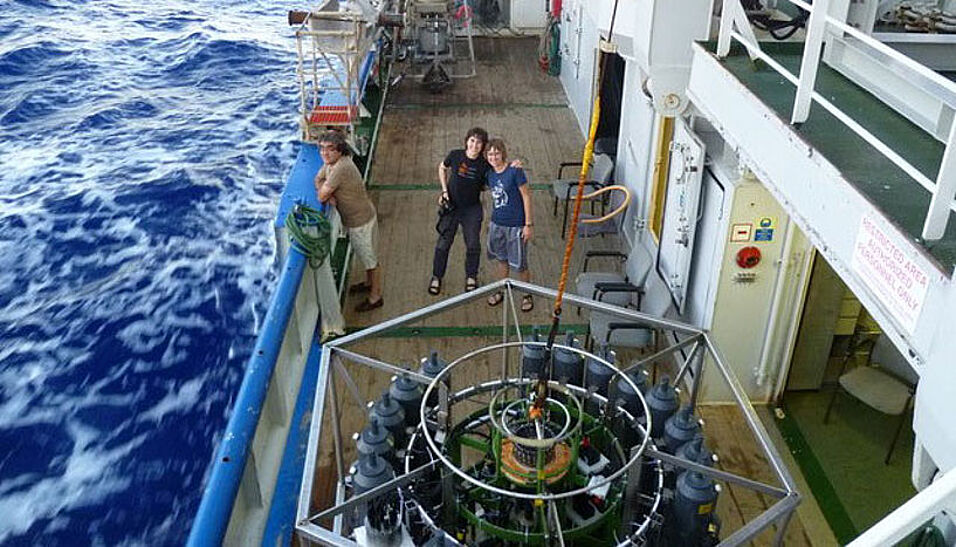"Microorganisms can only take up small molecules with a molecular weight of less than 600," says marine biologist Herndl. They could easily swallow simple sugar (glucose) with a molecular weight of 180, but long-chain carbohydrates with molecular weights over a thousand and larger proteins they could not. However, extracellular enzymes in the deep sea are found mainly dissolved in ambient water rather than cell associated. In order to resolve this paradox, the scientists conducted a global survey of peptidases and carbohydrate-active enzymes (CAZymes), two key enzyme groups initiating organic matter assimilation, in an integrated metagenomics, metatranscriptomics, and metaproteomics approach. The abundance, percentage, and diversity of genes encoding secretory processes, i.e., dissolved enzymes, consistently increased from epipelagic to bathypelagic waters, indicating that organic matter cleavage, and hence prokaryotic metabolism, is mediated mainly by particle-associated prokaryotes releasing their extracellular enzymes into diffusion-limited particles in the bathypelagic realm.
"Linking extracellular enzymes to phylogeny indicates a predominantly particle-associated lifestyle of deep-sea prokaryotes"; Zihao Zhao, Federico Baltar, Gerhard J. Herndl, 15. April 2020 , "Science Advances".

